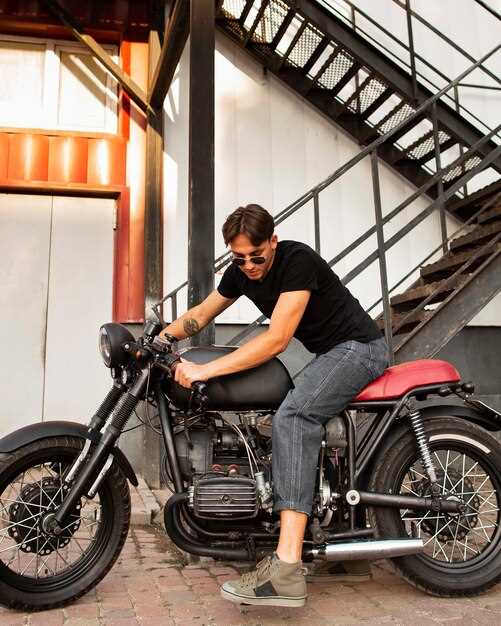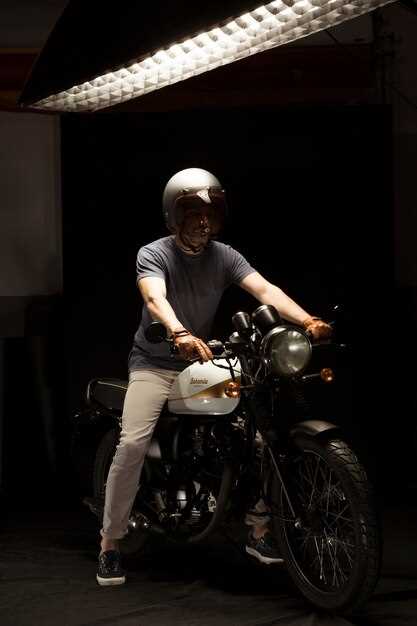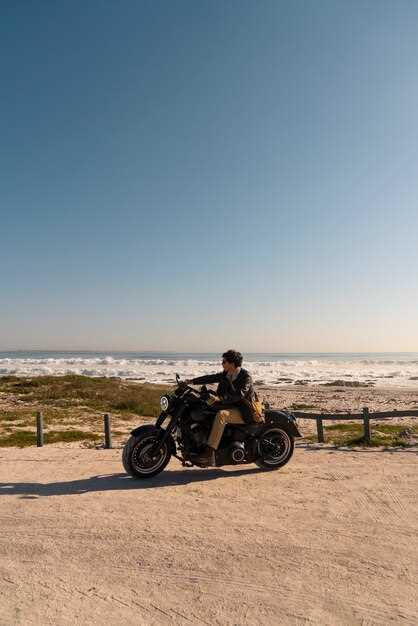
If you’re looking to dive into the world of motorcycle customization, building a cafe racer is an exhilarating way to start. A cafe racer, defined by its sleek lines and minimalist aesthetic, often stems from the conversion of an older motorcycle into a personalized machine that reflects the rider’s style. This guide will walk you through the essential steps and considerations for creating your very own cafe racer.
Understanding the basics of cafe racer builds is crucial for beginners. Conversion involves transforming a classic motorcycle into a race-inspired bike that combines both performance and visual appeal. This process requires a clear vision of what you want to achieve, whether it’s emphasizing speed, comfort, or simply the iconic cafe racer look.
As you embark on your journey, you will need to familiarize yourself with key components and tools necessary for the conversion. Knowing how to work with the frame, suspension, and engine will empower you to make informed decisions that align with your design goals. By approaching your cafe racer project with patience and creativity, you can create a unique ride that not only stands out but also tells your personal story.
Cafe Racer Builds: A Beginner’s Guide to Starting Your Conversion

Embarking on a cafe racer build can be an exhilarating journey for motorcycle enthusiasts. The charm of transforming a standard bike into a sleek, high-performance racer lies in the customization and personal expression involved in the conversion process. To begin, you should choose a suitable motorcycle model; popular options include the Honda CB series, Kawasaki Z series, and Yamaha XS models. These bikes are known for their strong engines and classic aesthetics, making them ideal candidates for a cafe racer transformation.
Once you’ve selected your base motorcycle, the next step is to plan your build. Consider the specific aesthetic you wish to achieve, as cafe racers are characterized by their minimalist look, low handlebars, and a distinctive racing seat. Sketch out your ideas or gather inspiration from existing builds, as this will help guide your decisions throughout the conversion. Measurements and fit are crucial, so ensure that your chosen components align with your bike’s dimensions.
In the conversion process, a vital aspect is the selection of parts. You will likely want to replace or modify the handlebars, seat, fuel tank, and exhaust system. Handlebars should be lower and more aggressive, while the seat should be streamlined to enhance the racing appearance. Opt for lightweight materials to improve the bike’s performance, and consider customizing the exhaust for better sound and efficiency. Each modification should work harmoniously, focusing on both style and functionality.
It’s important to also pay attention to the electrical systems and wiring during your build. A simplified electrical setup can reduce weight and enhance reliability. You might consider upgrading the lighting with LED options, which are not only brighter but also consume less power. Ensure that your modifications comply with local regulations regarding safety and legality.
Once the major components are in place, focus on the visual details. Paintwork, decals, and unique finishing touches can make your cafe racer stand out. Don’t shy away from personalizing your bike with custom artwork or color schemes that reflect your style. Finally, before hitting the road, perform thorough maintenance checks to ensure everything functions correctly, and verify that the conversion adheres to safety standards.
The journey of building a cafe racer is not just about the end product; it’s about the skills acquired and the satisfaction of creating something uniquely yours. With careful planning, quality parts, and an eye for detail, your conversion can transform a standard motorcycle into a stunning cafe racer that showcases your personality and passion for riding.
Choosing the Right Base Motorcycle for Your Cafe Racer Project
When embarking on a cafe racer conversion, the choice of the base motorcycle is crucial to the success of your project. The right bike can significantly ease the building process and enhance the overall aesthetic and performance of your cafe racer.
Firstly, consider the weight and size of the motorcycle. A lighter bike typically allows for easier handling and better performance. Popular choices include vintage models like the Honda CB series, Yamaha XS650, and Ducati 250. These bikes have a smaller stature, which makes them perfect for the agile, stripped-down nature of cafe racers.
Secondly, pay attention to the engine type and displacement. Engines with a displacement between 250cc to 750cc are ideal for beginners, offering a good balance of power and manageability. Inline-four or twin-cylinder engines are popular for their reliable performance and tuning capabilities, making them excellent candidates for a cafe racer conversion.
Additionally, the availability of parts is an essential factor. Models with a large aftermarket support or a community of enthusiasts can simplify sourcing necessary components and accessories. Brands like Honda, Kawasaki, and Yamaha have an extensive catalog of parts, making maintenance and upgrades easier throughout your build.
Finally, assess the motorcycle’s frame and overall structure. A sturdy frame is vital for the stability and integrity of your cafe racer. Look for bikes with a simple frame design, which will facilitate modifications such as clip-on handlebars and a custom seat. Moreover, a minimalist body allows for easier customization without significant structural changes.
In summary, selecting the right base motorcycle significantly impacts your cafe racer project. Focus on weight, engine type, parts availability, and frame design to identify the perfect bike that aligns with your vision. With the right foundation, your cafe racer conversion can become a rewarding and exhilarating experience.
Essential Tools and Parts Needed for Cafe Racer Conversion

Transforming a standard motorcycle into a cafe racer requires a set of specific tools and parts to achieve the desired look and performance. Below is a detailed list of both.
Essential Tools
- Socket Set: A comprehensive socket set is crucial for loosening and tightening various bolts throughout the bike.
- Wrenches: Adjustable wrenches and torque wrenches are necessary for assembling parts securely while ensuring components are not overtightened.
- Screwdrivers: A set of flathead and Phillips screwdrivers will cover the majority of the screws you’ll encounter.
- Wire Cutters and Strippers: These will be essential for any electrical work, especially when dealing with lights and signals.
- Drill and Drill Bits: Needed for modifying parts or mounting new components like seats and fenders.
- Multimeter: Useful for diagnosing electrical issues and ensuring all connections are functioning well.
- Angle Grinder: For cutting metal components and making precision adjustments to the frame or parts.
- Bench Vise: This will help stabilize parts while you work on them, providing a secure hold for cutting or grinding.
Key Parts for Cafe Racer Conversion
- Seat: A slim, retro-style seat is an iconic feature of cafe racers. Look for options that match the style you envision.
- Handlebars: Lowered or clubman handlebars will give your bike that classic cafe look while enhancing rider comfort.
- Rear Sets: Adjustable rear footpegs help achieve a sportier riding position, crucial for the cafe racer aesthetic.
- Headlight: Opt for a minimalist round headlight to maintain the clean lines typical of cafe racers.
- Fenders: Consider removing the front fender or replacing it with a smaller version to reduce weight and enhance style.
- Exhaust System: A cafe racer-specific exhaust will not only improve performance but also contribute to the bike’s aesthetic appeal.
- Fuel Tank: A smaller, flatter fuel tank can give your bike a lower profile and streamline its overall look.
- Bodywork: Custom body panels or kits can help achieve that classic cafe racer silhouette while improving aerodynamics.
Having the right tools and parts at your disposal before starting your cafe racer conversion will streamline the process and ensure that you can achieve the desired results efficiently. Take the time to gather these essentials, and you’ll be well on your way to creating a unique cafe racer that reflects your personal style.
Step-by-Step Tips for Customizing Your Cafe Racer for Performance and Style
Customizing your cafe racer involves a balance between enhancing performance and achieving a unique aesthetic. Start by assessing your motorcycle’s current condition and defining your goals for performance and style.
1. Choose a Base Bike: Select a bike that has a lightweight frame and a strong engine. Classic models from brands like Honda, BMW, and Yamaha are popular choices. Ensure that spare parts are readily available.
2. Upgrade the Suspension: The handling of your cafe racer significantly impacts performance. Replace stock forks and rear shocks with higher-quality aftermarket options. Focus on settings that suit your riding style and terrain.
3. Reduce Weight: Strip unnecessary components from your bike, such as passenger pegs, bulky fenders, and excess wiring. Consider lightweight materials like carbon fiber or aluminum for replacements to further reduce weight.
4. Improve Exhaust System: A performance exhaust can enhance power and give your racer a distinctive sound. Opt for a slip-on or a full exhaust system designed specifically for your bike model to improve airflow and performance.
5. Tune the Engine: Adjusting the fuel and air mixture is vital for optimal efficiency. Consider re-jetting the carburetor or remapping the ECU if your bike uses fuel injection. This step may also require performance air filters for better airflow.
6. Customize the Seating: The cafe racer seat should be both stylish and ergonomic. A low-profile, cafe-style seat not only enhances aesthetics but can also lower the bike’s center of gravity, improving handling.
7. Personalize the Aesthetics: Select a color scheme that reflects your personality. Custom paint jobs, decals, or even vinyl wraps can dramatically change your bike’s appearance. Don’t forget to add unique details like custom grips or mirrors.
8. Optimize Braking System: Upgrade your brakes to improve stopping power. New calipers, discs, or even braided steel hoses can enhance performance while adding to the overall look of your cafe racer.
9. Add Instrumentation: Installing a minimalist speedometer or a smart display can provide essential information while contributing to the clean lines that characterize cafe racers. Choose a design that complements your bike’s style.
10. Test Ride and Refine: After making modifications, take your cafe racer for a test ride. Pay attention to handling, comfort, and performance. Adjust components as necessary to achieve the perfect balance of style and functionality.












